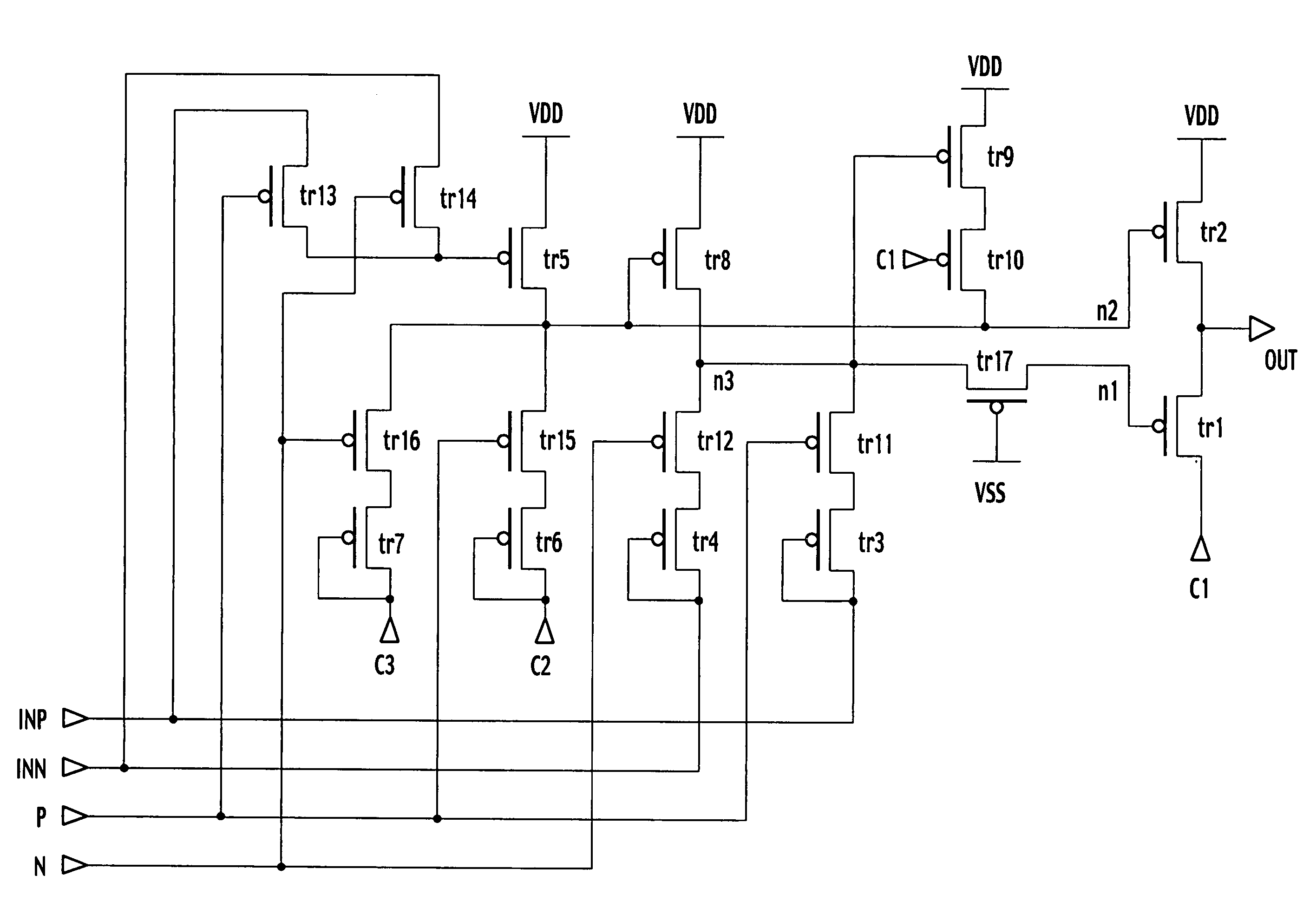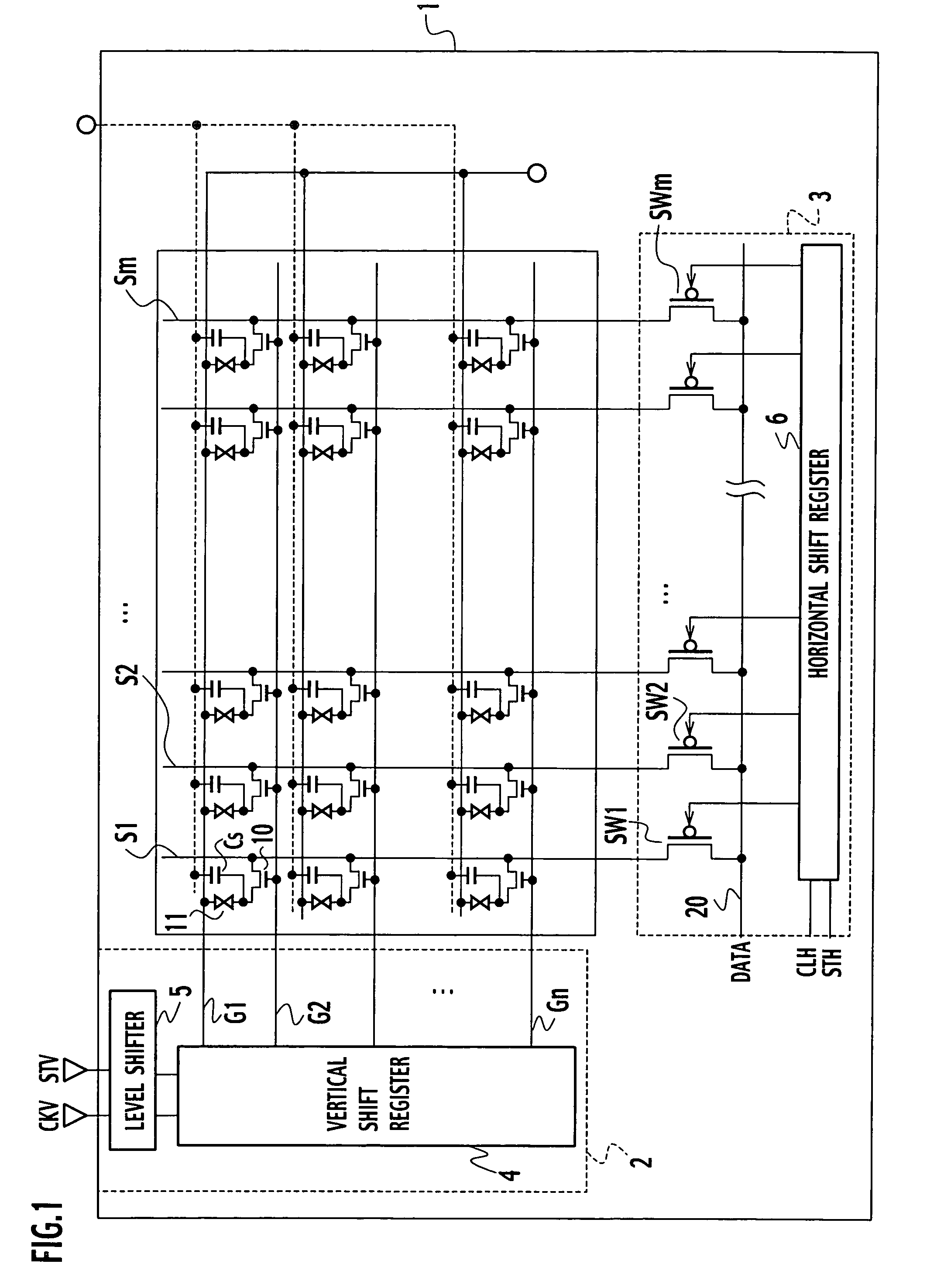Bidirectional shift register shifting pulse in both forward and backward directions
a technology of shift register and shift register, applied in the direction of digital storage, static storage, instruments, etc., can solve the problems of deteriorating display quality, variation, and inability to obtain the output signal of each shift register at a sufficient potential level
- Summary
- Abstract
- Description
- Claims
- Application Information
AI Technical Summary
Benefits of technology
Problems solved by technology
Method used
Image
Examples
example
[0075]A bidirectional shift register DSR of an example is one that solves the above-described problems in the shift register of the comparative example. By use of the circuit diagram of FIG. 4 and timing charts of FIGS. 10 and 11, operations of the bidirectional shift register of the example will be described below. Here, it is assumed that the conductive path to the control electrode of the first transistor tr1 is the node n1, the conductive path to the control electrode of the second transistor tr2 is the node n2 and the conductive path to the source of the seventeenth transistor tr17 is the node n3.
[0076]Note that the first transistor tr1, the second transistor tr2, the third transistor tr3, the fifth transistor tr5, the sixth transistor tr6, the eighth transistor tr8, the ninth transistor tr9 and the tenth transistor tr10 of the bidirectional shift register DSR correspond to the twenty-first transistor tr21, the twenty-second transistor tr22, the twenty-third transistor tr23, th...
PUM
| Property | Measurement | Unit |
|---|---|---|
| conductive | aaaaa | aaaaa |
| voltage level | aaaaa | aaaaa |
| voltage | aaaaa | aaaaa |
Abstract
Description
Claims
Application Information
 Login to View More
Login to View More - R&D
- Intellectual Property
- Life Sciences
- Materials
- Tech Scout
- Unparalleled Data Quality
- Higher Quality Content
- 60% Fewer Hallucinations
Browse by: Latest US Patents, China's latest patents, Technical Efficacy Thesaurus, Application Domain, Technology Topic, Popular Technical Reports.
© 2025 PatSnap. All rights reserved.Legal|Privacy policy|Modern Slavery Act Transparency Statement|Sitemap|About US| Contact US: help@patsnap.com



